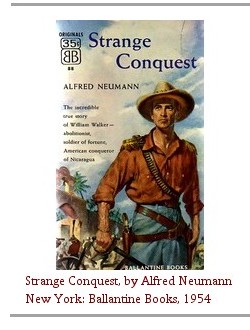
· Excerpt
· Editor’s Comments
· Other Comments
· Locate a Copy
Excerpt
The barber at Stadelheim prison is called Adam, and most people don’t know if it his given name or his surname. He is not an independent businessman, but a state employee with the title of Surgical Assistant and a certificate attesting to his competence. He lives in the prison. Until 1935 he lived in the same capacity in the surgical clinic, and shaved the hairy parts of bodies before they were submitted to the surgeon’s knife. He is a master of his trade, but his trade has nothing in common with the gay, loquacious beautification work of a Figaro. For he does not shave faces. Adam is grave and taciturn and emaciated like a fakir. His office, his appearance and the late hour of the night at which he usually goes into action, spread terror, deadly terror. He is used to it and pays no attention to it. Sometimes it happens that his clients must be tied to their cots face down and cut hair in any position and has never yet nicked anyone. That is his pride.
“Adam, work!” the prison’s executive secretary speaks over the house wire.
“Cell number,” Adam requests.
“There are six.”
“Six,” says Adam. It is not an exclamation of astonishment, but only a repetition of the number. He hangs up, and dons his work coat. Every barber in the world wears a white jacket, Adam wears a black one. He is no worldly barber.
Editor’s Comments
Six of Them is a remarkable feat of imagination. An exile from Germany, writer Alfred Neumann wrote the book, a fictionalized account of the 1943 White Rose protest against Hitler and Nazism, and the subsequent arrest, trial, and execution of the six organizers, with little more than hearsay accounts published in Time magazine and circulated among the emigre community. Yet he managed to convey with considerable accuracy both the particulars and the atmosphere of the event.
The book opens with the six in jail, awaiting their questioning by a Nazi Peoples’ Court. Although the narrative thread runs a short course from here to their conviction and execution, Neumann provides for each of the accused a flashback that shows how he or she came to the decision to publically oppose Hitler, with all the obvious risks that involved. Hans and Sophie Moeller (brother and sister Hans and Sophie Scholl in the real protest), university professor Karl von Hennings and his wife Dora (Karl Huber and his wife), and their comrades, Christopher Sauer and Alexander Welte, each arrived at his or her choice through different experiences and motivations. Sophie had watched as her best friend, a Jewish girl, was hounded out of school, then hemmed in by increasingly restrictive measures, and finally shipped off to a concentration camp. Karl von Hennings’ objection was an ethical one; Christopher Sauer’s a religious one. Dora went along out of love for Karl; Alexander out of loyalty to Hans, whom he befriended on the Eastern Front.
Neumann contrasts these six with the judges on the Peoples’ Court. They, too, have reached their destination through different paths.One is an dilettante nobleman who disdains his Nazi colleagues but lacks the personal strength to find any faith of his own to follow. Another is a fat, smug butcher who gloats at the rise in his fortune and standing resulting from his decision to join the Nazi Party early in its existence. Where the six accused took risks to voice and defend their beliefs, Neumann shows the judges as compromised, corrupt, or opportunistic.The political power may be theirs, but the moral strength of the six protesters is greater.
The book suffers somewhat from Neumann’s awkward style and his tendency to rely too much on conveying his characters’ thoughts rather than their actions, but it remains a strong story. He often shows a cinematic flair for scene-setting: at the time he wrote Six of Them, he had just finished the screenplay for None Shall Escape, another tale of Nazism for which he was nominated for an Academy Award. Neumann may not have intended to turn Six of Them into a screenplay, but it wouldn’t have taken much effort.
The real story has itself been filmed several times, most recently in the 2005 film, Sophie Scholl, and the facts have also been well-documented in numerous books. Neumann wrote his novel to show Americans that a simple stereotype would not suffice to understand tthe German people, but perhaps there is little remaining reason for anyone to pick up Six of Them and read it. That does not mean, however, that the genuine merits of this book deserve to be forgotten.
Other Comments
- F. C. Weiskopf, Saturday Review of Literature, 28 July 1945
- A craftsman of great experience and skill, Mr. Neumann masterfully combines economy in the use of his artistic means with richness of imagination and narrative power…. Many passages of this sincere and passionate novel will long be remembered by its readers, especially the weird picture of Christopher Sauer; the fine character sketch of the “destroyed destroyer of life,” member of the Peoples’ Court, Baron Freyberg; and the moving story of the married love of Karl von Hennings and Dora.
- Virgilia Sapieha (Peterson), Weekly Book Review, 29 July 1945
- The six lives are both credible and intensely moving. Bright shafts of reason in the Nazi night, they show up the grotesque crooks and cranks and fools around them. If this book, Six of Them, could be filmed for Germany it might help to melt the frozen youth and quicken the hearts that a century of militarism has stilled.
Locate a Copy
- Look for it at Amazon.com: Find it!
- Look for it at Amazon.co.uk: Find it!
- Look for it at AddAll.com: Find it!

